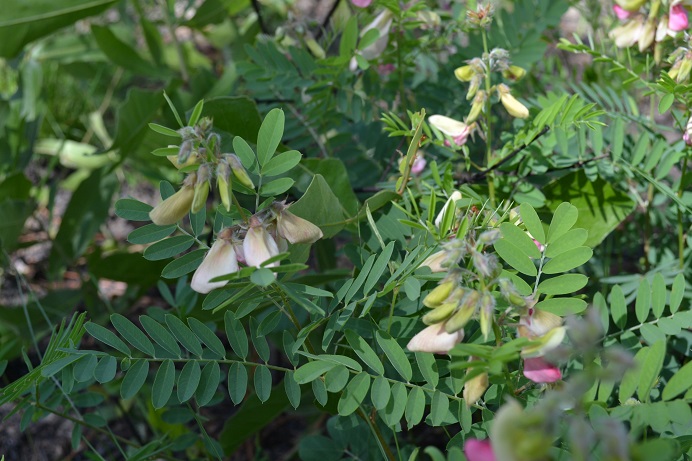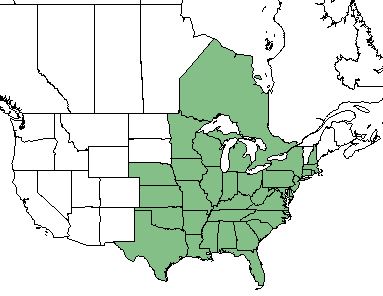Difference between revisions of "Tephrosia virginiana"
(→Taxonomic Notes) |
(→Ecology) |
||
| Line 38: | Line 38: | ||
<!--===Fire ecology===--> <!--Fire tolerance, fire dependence, adaptive fire responses--> | <!--===Fire ecology===--> <!--Fire tolerance, fire dependence, adaptive fire responses--> | ||
<!--===Pollination===--> | <!--===Pollination===--> | ||
| − | + | ||
| + | ===Use by animals=== <!--Herbivory, granivory, insect hosting, etc.--> | ||
| + | ''T. virginiana'' comprises 2-5% of the diets of some large mammals and terrestrial birds.<ref name="Miller & Miller 1999">Miller JH, Miller KV (1999) Forest plants of the southeast and their wildlife uses. Southern Weed Science Society.</ref> | ||
<!--==Diseases and parasites==--> | <!--==Diseases and parasites==--> | ||
Revision as of 13:39, 12 January 2018
| Tephrosia virginiana | |
|---|---|

| |
| Photo by Kevin Robertson | |
| Scientific classification | |
| Kingdom: | Plantae |
| Division: | Magnoliophyta - Flowering plants |
| Class: | Magnoliopsida - Dicots |
| Order: | Fabales |
| Family: | Fabaceae |
| Genus: | Tephrosia |
| Species: | T. virginiana |
| Binomial name | |
| Tephrosia virginiana (L.) Pers. | |

| |
| Natural range of Tephrosia virginiana from USDA NRCS Plants Database. | |
Common Name(s): Virginia goat's-rue;[1] Virginia tephrosia[2]
Contents
Taxonomic Notes
Varieties: T. virginiana var. glabra; T. virginiana var. virginiana[1]
Synonym(s): Cracca virginiana;[1][2] Cracca latidens; T. latidens[2]
Description
Distribution
This species is found from Texas, eastward to Florida, northward to New Hampshire and New York, and inland to Minnesota and Nebraska.[1][2] It is also reported to occur in the Ontario province of Canada.[2]
Ecology
Habitat
T. virginiana is found in sandhills, other pinelands, xeric or rocky woodlands and forests, outcrops, shale barrens, other barrens, and dry roadbanks.[1]
Phenology
Flowering occurs from April through June.[1][3] Fruiting occurs from July through October.[1]
Use by animals
T. virginiana comprises 2-5% of the diets of some large mammals and terrestrial birds.[4]
Conservation and Management
Cultivation and restoration
Photo Gallery
References and notes
- ↑ 1.0 1.1 1.2 1.3 1.4 1.5 1.6 Weakley A. S.(2015). Flora of the Southern and Mid-Atlantic States. Chapel Hill, NC: University of North Carolina Herbarium.
- ↑ 2.0 2.1 2.2 2.3 2.4 USDA, NRCS. (2016). The PLANTS Database (http://plants.usda.gov, 12 January 2018). National Plant Data Team, Greensboro, NC 27401-4901 USA.
- ↑ Nelson G. (12 January 2018) PanFlora. Retrieved from gilnelson.com/PanFlora/
- ↑ Miller JH, Miller KV (1999) Forest plants of the southeast and their wildlife uses. Southern Weed Science Society.